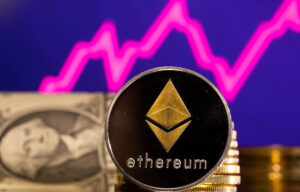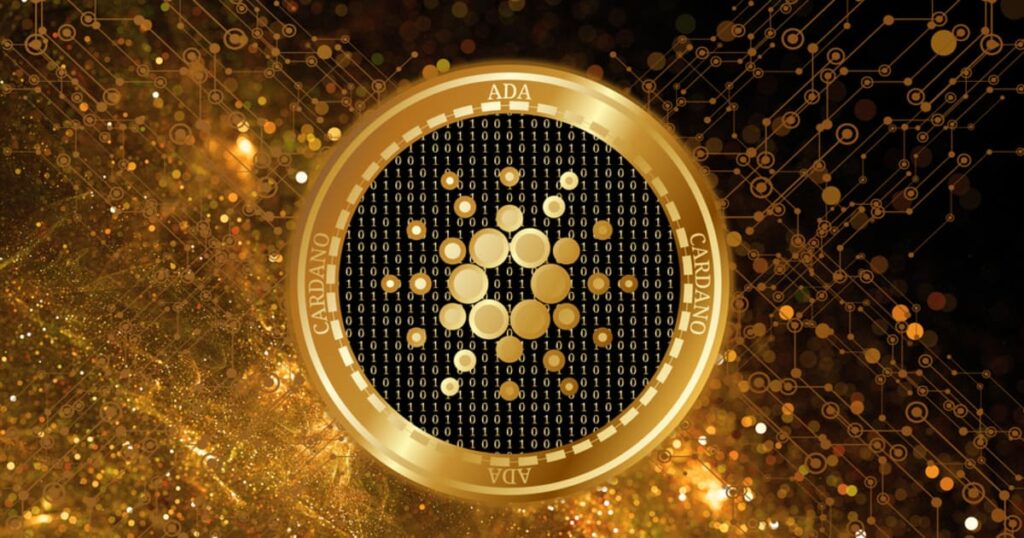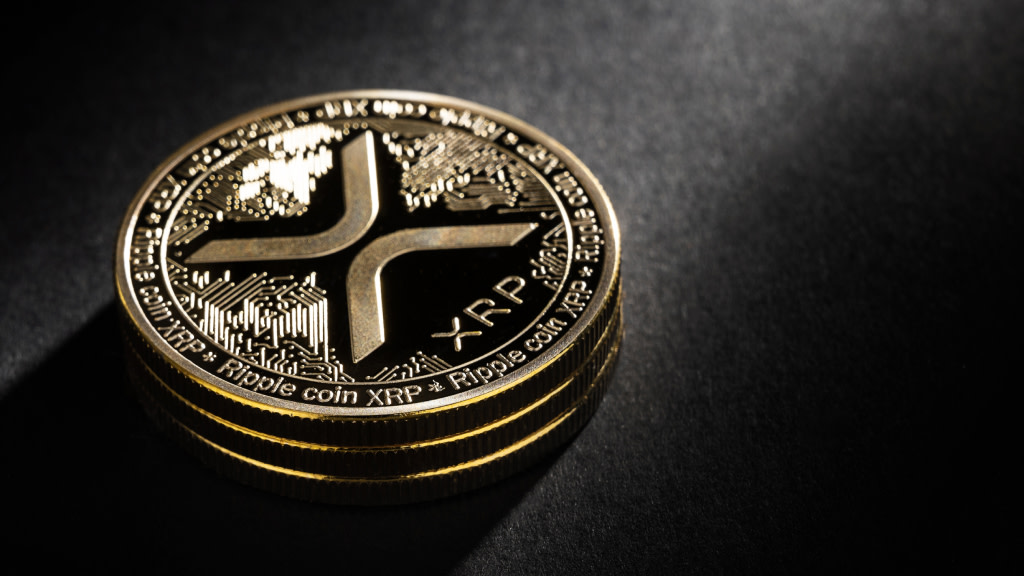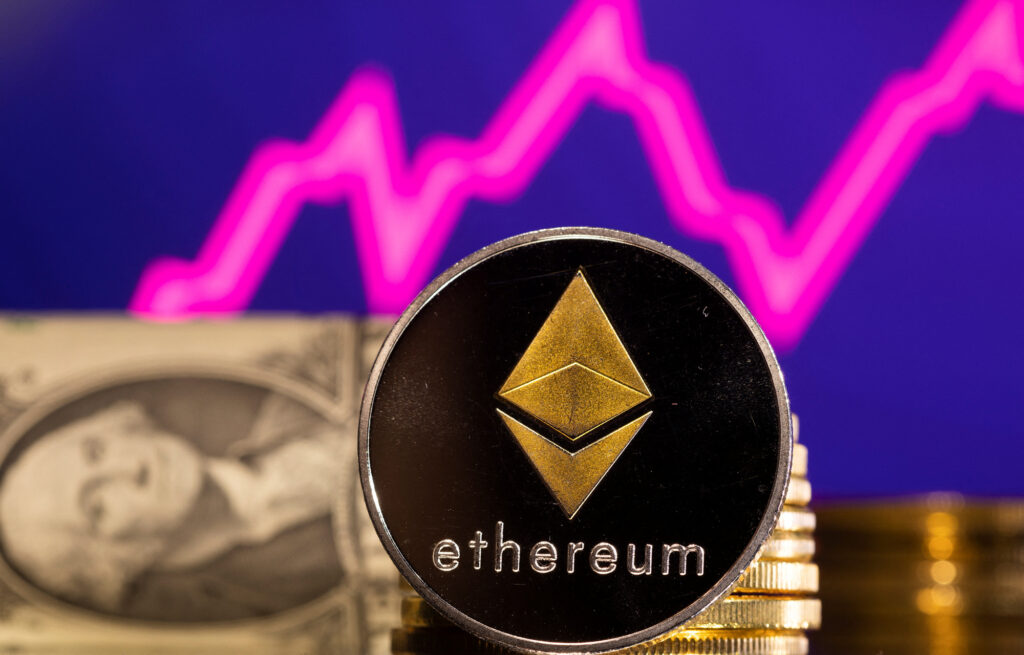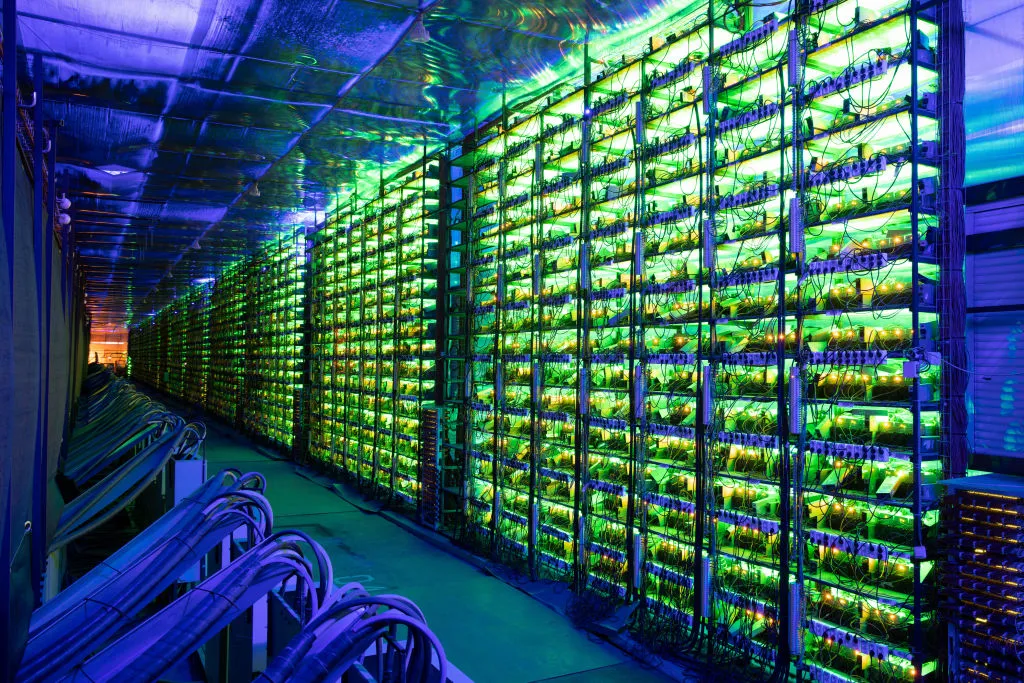COTI has unveiled the Africa Tokenization Council, an ambitious initiative launched in collaboration with strategic partners to drive blockchain and artificial intelligence (AI) adoption across Africa and the Middle East. This pioneering effort seeks to unite African officials with global leaders in blockchain and tokenization, fostering investment and innovation within the region.
With a rapidly growing technology-focused population and increasing interest in digital assets, African countries are poised to make a significant impact on the global blockchain ecosystem. The Africa Tokenization Council aims to convene leaders, investors, and industry practitioners through symposiums dedicated to regulatory frameworks, partnerships, investment strategies, and the necessary pathways for a thriving tokenization ecosystem.
The initiative will also focus on setting standards and regulatory advancements that support seamless ownership structures, thus creating an environment conducive to international investment in real-world asset (RWA) tokenization.
Unlocking Africa’s Market Potential
The combination of Africa’s burgeoning fintech landscape, regulatory advancements, and a thriving entrepreneurial spirit presents a unique opportunity for blockchain-driven economic transformation. Africa and the Middle East collectively hold a GDP exceeding $5 trillion, with a history of adopting mobile technologies, fintech solutions, and cryptocurrency at an accelerated pace compared to traditional economic environments.
The Africa Tokenization Council, backed by prominent government officials, investors, and practitioners, is well-positioned to facilitate this shift. With strong involvement from Saudi Arabian leadership and COTI’s advanced privacy-focused blockchain technology, the council envisions a future where tokenization becomes an integral part of economic growth and financial inclusion.
Key Figures Leading the Initiative
Several influential figures have joined the Africa Tokenization Council, bringing their expertise in energy, finance, and blockchain:
- Dr. Mansour Almalik holds a Ph.D. in Petroleum Engineering from Texas A&M University and has over two decades of experience in government and academia. He has previously served as a Senior Advisor to the Saudi Arabian Ministry of Petroleum and Mineral Resources and has represented Saudi Arabia in the United Nations’ Science and Technology Committee. As the Chairman of Attwar Group, his interests span energy, fintech, and artificial intelligence.
- Alaa Bishara is a seasoned entrepreneur and crypto investor with a background in traditional real estate. His extensive experience in managing high-net-worth portfolios has positioned him as a key player in the intersection of real estate, fintech, and digital innovation. His commitment to Real World Asset (RWA) tokenization underscores his vision for a financially inclusive future driven by blockchain technology.
- Shahaf Bar-Geffen (CEO of COTI) and Joshua Maddox (Chief Ecosystems and Partnerships Officer of COTI) have also joined the council, reinforcing the company’s commitment to fostering blockchain adoption in Africa.
Global Events and Strategic Collaborations
The Africa Tokenization Council is set to host a series of strategic symposiums and roundtables aimed at connecting African governments with blockchain initiatives, global investors, and industry experts. These events will bring together diverse stakeholders, including:
- Blockchain practitioners dedicated to driving tokenization efforts for economic expansion.
- Government officials and regulatory bodies exploring blockchain’s potential in governance and finance.
- Investors (both local and international) seeking opportunities in Africa’s tokenized asset space.
- Technical developers and blockchain experts who will contribute to the infrastructure supporting tokenization projects.
- Market distribution partners to facilitate the adoption of tokenized assets across various industries.
The insights gained from these events will be critically analyzed and assessed for risks, ensuring that the council’s findings contribute to the development of strategic investment pathways and practical implementations of blockchain-based tokenization initiatives.
COTI’s Role as a Core Infrastructure Provider
COTI, a leading blockchain infrastructure provider, will play a crucial role in the Africa Tokenization Council’s mission by leveraging its expertise in AI and blockchain. As the only provider offering “Privacy on Demand,” COTI ensures that privacy-compliant blockchain solutions are accessible, welcoming participation from other major blockchain providers and partners.
COTI’s technology delivers a fast, scalable, and secure privacy layer for AI-driven and blockchain initiatives. Its permissioned privacy model enables secure on-chain data sharing while ensuring regulatory compliance—a major barrier that has traditionally slowed the adoption of RWAs on the blockchain.
Addressing Privacy Concerns in Tokenization
Tokenization involves moving real-world assets—including infrastructure, natural resources, and financial instruments—onto blockchain networks. Despite its potential, institutions have been hesitant to adopt blockchain without comprehensive privacy protections. Public blockchains’ transparency presents compliance challenges for corporations that must safeguard sensitive user data.
COTI addresses this challenge by providing permissioned privacy, ensuring that relevant authorities can access compliance and reporting data without exposing confidential information. This feature makes blockchain adoption feasible for enterprises and governments seeking to tokenize large-scale assets.
Scaling Tokenization for National Economies
The Africa Tokenization Council aims to facilitate tokenization at the national infrastructure level. By leveraging blockchain’s transparency and efficiency, the council envisions large-scale projects that will drive economic growth across Africa and the Middle East. COTI’s robust infrastructure will serve as a foundational pillar for these initiatives, positioning itself as a key enabler of blockchain-driven economic transformation.
Bitcoin has long been considered a hedge against economic instability, often referred to as “digital gold.” However, recent market movements have put this perception into question as Bitcoin’s price has seen a sharp decline while traditional safe-haven assets like gold have surged.
Bitcoin’s Decline Amid Global Market Tensions
The recent downturn in Bitcoin’s price coincided with increasing economic uncertainty. With global financial markets reacting to policy shifts and trade disruptions, investors have flocked to assets traditionally viewed as safe havens. This shift has left Bitcoin struggling to maintain its value, with a significant price drop occurring in a short span of time.
Gold Surges While Bitcoin Faces Volatility
As Bitcoin’s value plummeted, gold has reached new highs, reinforcing its status as a preferred store of value during times of uncertainty. This stark contrast in performance has fueled debate over whether Bitcoin can truly hold its place as a safe-haven asset or if it remains a high-risk, speculative investment.
A cryptocurrency trader has reportedly made nearly $7 million in profits following a major government announcement related to digital assets. By placing large leveraged bets just before the news broke, the trader was able to capitalize on the sudden surge in market prices.
The timing of the trades has raised speculation about whether the trader had prior knowledge of the announcement. Regardless, the massive gains highlight the volatility of the crypto market and the potential for major profits when traders make the right moves at the right time.
Using High Leverage for Maximum Gains
The trader, who has been identified as a major player in the market, deposited nearly $6 million into a derivatives exchange and used 50x leverage to open long positions on Bitcoin and Ethereum. This aggressive trading strategy allowed them to control a position worth around $200 million.
With such a high level of leverage, even a small price movement in their favor resulted in massive returns. However, this approach also carried significant risk—had the market moved in the opposite direction, the losses could have been catastrophic.
Government Announcement Sparks Market Surge
The market movement that fueled the trader’s gains came shortly after a policy announcement confirming the creation of a U.S. Crypto Strategic Reserve. The announcement caused a rapid increase in the price of Bitcoin, Ethereum, and several other major cryptocurrencies.
- Bitcoin surged over 11%, reaching a high of $95,000.
- Ethereum climbed by 14%, hitting $2,541.
- Other digital assets, including Solana, XRP, and Cardano, also saw strong gains.
The trader placed their first major bet less than an hour before the official announcement, leading to speculation about whether they had inside knowledge of the upcoming news.
Questions Around Possible Insider Trading
Given the precision of the trades and their proximity to the announcement, questions have emerged about whether insider trading played a role. While there is no concrete evidence, such situations often lead to scrutiny from regulators and exchanges.
With crypto markets still lacking the strict oversight found in traditional financial markets, cases like this highlight the ongoing challenges in ensuring fair and transparent trading practices.
Conclusion
A trader managed to turn a well-timed bet into nearly $7 million in profit, leveraging a market-moving government announcement to their advantage. Whether it was sheer luck or something more, the case underscores the unpredictable nature of the crypto market and the massive potential gains that come with high-risk trading strategies.
Cardano has seen a significant rise in value, with its price climbing steadily in recent trading sessions. This increase comes amid growing market confidence and renewed interest in blockchain projects.
The surge in price reflects a combination of technical factors, investor sentiment, and broader market movements. With increased demand and stronger buying pressure, Cardano has emerged as one of the top-performing assets in recent days.
Factors Driving the Rally
Several key factors have contributed to the rise in Cardano’s price:
- Market Momentum – The overall crypto market has been experiencing a positive trend, with several major assets showing gains.
- Increased Adoption – More projects and platforms are integrating Cardano’s technology, fueling long-term confidence.
- Institutional Interest – Growing attention from larger investors has added support to the asset’s price movement.
- Technical Breakout – Price charts indicate that Cardano recently broke through resistance levels, triggering further buying activity.
These combined elements have led to a sharp increase in demand, helping to push the asset’s value higher.
How Long Will the Rally Last?
While Cardano’s recent rise is encouraging, the question remains whether the momentum can be sustained. Market analysts are watching key resistance levels to determine if the price surge will continue.
Several factors could influence whether Cardano maintains its gains, including:
- Broader market conditions – A continued rally in the crypto space could provide further support.
- Upcoming developments – New updates and partnerships could boost confidence in Cardano’s future.
- Investor sentiment – If confidence remains high, the price could hold steady or move even higher.
However, volatility is always a factor in the crypto market, and sudden shifts could impact the current trajectory.
What This Means for Cardano Holders
For those holding Cardano, the recent price increase is a positive sign. A sustained uptrend could attract more attention to the asset, potentially leading to further gains.
That said, staying informed about market conditions remains crucial. With fluctuations always a possibility, monitoring price levels and broader trends can help investors make informed decisions.
Conclusion
Cardano’s price surge highlights growing confidence in the project and the broader crypto market. With increased demand, strong technical indicators, and positive sentiment, the asset has seen impressive gains. Whether this trend continues will depend on market movements and investor behavior in the days ahead.
The president of the Swiss National Bank (SNB) has stated that Bitcoin does not meet the necessary requirements to be considered a reserve asset, citing concerns over its volatility, liquidity, and security risks. His remarks come amid ongoing discussions about Bitcoin’s potential role in national financial reserves.
Bitcoin’s Volatility and Liquidity Concerns
One of the key reasons cited for dismissing Bitcoin as a reserve asset is its extreme price volatility. Unlike traditional reserve currencies or assets like gold, Bitcoin’s price fluctuations make it unreliable for storing value over long periods. Central banks typically require stability in their reserves to manage national monetary policies effectively, making Bitcoin’s unpredictable nature a major drawback.
Additionally, liquidity concerns play a role in this decision. Reserve assets must be easily converted into cash when needed, and while Bitcoin is highly liquid in the crypto market, its ability to maintain that liquidity during economic downturns remains uncertain.
Security Risks and Technical Challenges
Another concern raised is the security risks associated with Bitcoin. As a digital asset, Bitcoin is dependent on software, which means it can be exposed to vulnerabilities such as coding errors, hacking attempts, and other technical failures. While blockchain technology is considered secure, issues related to private key management and exchange security introduce additional risks that central banks must consider before integrating digital assets into their reserves.
Push for a Bitcoin Reserve Initiative
Despite the SNB’s rejection of Bitcoin as a reserve asset, there are ongoing efforts in Switzerland to push for its adoption. A public campaign is gathering signatures for a proposal that would require the central bank to add Bitcoin to its balance sheet. If enough signatures are collected, the issue will go to a referendum, allowing Swiss citizens to vote on whether Bitcoin should be included in national reserves.
Switzerland’s Broader Role in Crypto Adoption
While the SNB remains skeptical of Bitcoin, Switzerland continues to be a key player in cryptocurrency adoption. The country has established itself as a global blockchain hub, with major financial institutions and crypto startups operating within its regulatory framework. The city of Lugano, for example, has positioned itself as a leading supporter of Bitcoin adoption, hosting major blockchain events and implementing policies to encourage crypto transactions.
As discussions around Bitcoin’s role in financial reserves continue, Switzerland’s approach to balancing innovation with financial stability will be closely watched by both the crypto industry and traditional financial institutions.
XRP has seen a significant price surge, climbing by 8% in a single day as investor confidence grows. This rise follows a period of market downturn, with renewed optimism surrounding Ripple’s ongoing legal battle and large investors accumulating substantial amounts of the cryptocurrency.
Legal Developments Fueling Optimism
The long-standing legal dispute between Ripple and regulators has been a key factor in XRP’s price movements. Since the case was filed, uncertainty surrounding XRP’s status as a security has led to fluctuations in its value. However, recent regulatory shifts have led to speculation that the case could either be dismissed or settled under favorable terms.
With regulators easing enforcement actions against several high-profile firms in the industry, sentiment is shifting towards a potential resolution. This shift has played a significant role in driving XRP’s price higher, as traders anticipate a clearer regulatory framework that could benefit the token’s long-term adoption.
Whale Accumulation Signals Confidence
Large investors, commonly referred to as “whales,” have been actively accumulating XRP during recent price dips. On-chain data suggests that wallets holding between 1 million and 100 million XRP have added hundreds of millions of tokens to their holdings in a short period.
Whale accumulation is often seen as a bullish signal, as these investors typically have a long-term perspective and access to information that may not yet be widely reflected in the market. Their increased holdings suggest they expect a strong recovery and potentially further gains in XRP’s price.
Technical Indicators Suggest Further Upside
From a technical standpoint, XRP is showing signs of a recovery pattern. The price is approaching a critical resistance zone, where multiple moving averages are converging. If the token can break above this level, it could trigger further upward momentum, potentially retesting recent highs.
The Relative Strength Index (RSI) has also rebounded from oversold conditions, indicating growing buying pressure. A continuation of this trend could lead to an extended rally, with price targets set higher if key resistance levels are surpassed.
What’s Next for XRP?
XRP’s recent surge highlights the impact of both regulatory developments and market sentiment on its price. If the legal uncertainty surrounding Ripple is resolved positively, the token could see sustained growth.
However, traders should remain cautious, as broader market conditions and external factors could still influence price movements. While technical indicators support a potential continuation of the uptrend, volatility remains a key factor to watch in the coming weeks.
The idea of governments holding Bitcoin as a strategic reserve has moved from speculation to serious discussion. Some U.S. states are now considering adopting Bitcoin reserves before the federal government takes similar action.
State-Level Bitcoin Adoption
Certain states have taken legislative steps toward establishing Bitcoin reserves. Some are in the final stages of approving bills that would allow state treasuries to hold Bitcoin as part of their reserves. Others have initiated discussions on how integrating Bitcoin into state financial systems could provide a hedge against inflation and economic instability.
However, not all states have embraced the idea. Several have rejected proposals related to Bitcoin reserves, highlighting concerns over volatility and regulatory uncertainty. This divide showcases the varying perspectives on cryptocurrency adoption within the U.S.
Federal Government’s Stance on Bitcoin Reserves
At the federal level, discussions around Bitcoin reserves have been more measured. Recent executive orders have explored the feasibility of a national Bitcoin stockpile, with some officials advocating for a sovereign wealth fund that includes digital assets.
Despite these developments, state governments are likely to move faster than the federal government in adopting Bitcoin reserves. The decentralized nature of state decision-making allows for more rapid policy changes, potentially setting a precedent for broader national adoption in the future.
Implications for Bitcoin Adoption
If states begin incorporating Bitcoin into their reserves, it could have significant implications for the cryptocurrency market. Increased governmental adoption could:
- Strengthen Bitcoin’s legitimacy as a store of value
- Influence future regulatory frameworks
- Encourage institutional investors to increase their exposure to digital assets
Conclusion
As some states lead the charge in integrating Bitcoin into their financial strategies, they may set the stage for broader adoption at the national level. While the federal government remains cautious, the momentum at the state level suggests that Bitcoin’s role in governmental reserves could expand in the near future.
The sudden collapse of cryptocurrency exchange FTX in November 2022 created turmoil in the crypto market. Once valued at $32 billion, FTX’s downfall was attributed to allegations of misusing customer funds to support its affiliated trading firm, Alameda Research. This led to a liquidity crisis, preventing customers from accessing their assets and culminating in a Chapter 11 bankruptcy filing.
Initiation of Creditor Repayments
In February 2025, FTX began its first round of creditor repayments, with a second round scheduled for later in the year. Creditors eligible for the next phase must verify their claims before receiving payments. Under the exchange’s recovery plan, the majority of affected users are expected to receive more than 100% of their claims in cash.
Industry Reactions and Expert Opinions
Industry analysts believe that the two-year repayment timeline, despite initial frustration, should be viewed as a positive outcome. Many had anticipated a much longer legal battle due to the complexities involved, including multiple jurisdictions, regulatory barriers, and legal negotiations.
Challenges in the Repayment Process
FTX’s multinational operations complicated the repayment process, requiring coordination across various legal systems. These jurisdictional challenges added layers of complexity, making the relatively swift resolution surprising to many.
Impact on Creditors and Market Sentiment
The repayment process has offered some relief to creditors and is seen as a step toward restoring confidence in the crypto industry. The ability to distribute funds relatively quickly, despite the scale of the collapse, demonstrates a level of accountability that is often lacking in similar cases.
Lessons Learned and Future Implications
The downfall of FTX has underscored the importance of transparency, regulatory oversight, and proper risk management for cryptocurrency exchanges. These developments could pave the way for stronger industry regulations and increased scrutiny over centralized platforms.
While the collapse was a significant blow, the expedited repayment process is being regarded as a sign that structured recovery efforts can yield positive results in the face of financial disasters.
Ethereum (ETH), the second-largest cryptocurrency by market capitalization, is teetering on the edge of a significant price threshold. Recently, ETH’s value has declined to approximately $2,229.09, nearing its lowest point since January 2024. This downturn has raised concerns among investors and analysts, particularly regarding the crucial $2,000 support level.
Recent Price Decline and Market Sentiment
Over the past week, Ethereum has experienced a substantial 24.5% decrease in its value, marking one of its most challenging periods since 2022. This sharp decline has led to over $200 million in liquidations within the last 24 hours alone. Market sentiment has been notably bearish, with social metrics indicating a significant drop in investor confidence. Crypto investment manager 0xLouisT observed that Ether’s social sentiment is “at its lowest in the past 12 months.”
Technical Analysis: The Double-Top Pattern
From a technical standpoint, Ethereum’s price chart reveals a concerning double-top pattern that has been forming over the past year. This bearish pattern is characterized by two consecutive peaks at similar price levels, suggesting potential reversal in an asset’s price trend. The neckline of this pattern is situated around the $2,100 mark. A decisive close below this level could validate the pattern, potentially triggering further downward momentum. Analysts warn that if Ethereum’s price falls below the critical $2,000 support, it could pave the way for an additional 28% decline, targeting the next significant support at $1,500.
The Role of the 200-Week Exponential Moving Average (EMA)
Another key indicator in Ethereum’s current price analysis is the 200-week exponential moving average (EMA). Historically, this EMA has acted as a reliable support level for Ethereum, closely aligning with its bottom ranges. Since 2020, ETH/USD has closed below the 200-week EMA only 14.55% of the time, underscoring its significance. Presently, Ethereum is trading below this EMA, which could signal prolonged bearish momentum if the price fails to reclaim this critical level in the near term.
Cost-Basis Distribution and Potential Support Zones
On-chain data provides additional insights into potential support areas for Ethereum. According to Glassnode, the cost-basis distribution price for ETH is approximately $1,890. This metric reflects the price at which a significant portion of ETH last moved on-chain, suggesting a potential support zone if the price continues to decline. Trader Morin highlights a demand zone between $2,100 and $1,900, anticipating that Ethereum’s downward movement might stabilize within this range as selling pressure diminishes.
Investor Behavior Amid Price Volatility
Despite the recent downturn, some data indicates that investors remain cautiously optimistic. Leon Waidmann, head of research at OnchainHq, points out that ETH balances on exchanges are decreasing even as prices fall. This trend suggests that investors might be accumulating ETH, transferring assets to personal wallets in anticipation of a future price recovery. Such behavior often reflects confidence in the asset’s long-term value proposition, despite short-term market volatility.
Conclusion: Navigating the Uncertainty
Ethereum’s approach to the $2,000 support level is a pivotal moment for traders and investors. The interplay of bearish technical patterns, critical support indicators, and on-chain metrics paints a complex picture of the current market landscape. While historical data offers some hope for a rebound, the validation of bearish patterns could lead to further declines. Market participants are advised to exercise caution, closely monitor key support levels, and consider broader market conditions when making investment decisions.
Core Scientific, a prominent Bitcoin mining company, has recently unveiled plans for a $1.2 billion data center expansion in collaboration with artificial intelligence (AI) startup CoreWeave. This announcement comes on the heels of the company’s fourth-quarter 2024 financial report, which disclosed a net loss of $265.5 million.
Financial Overview and Underlying Factors
In its Q4 2024 earnings report, Core Scientific attributed the substantial net loss primarily to a $224.7 million non-cash adjustment related to warrants and other contingent liabilities. This accounting adjustment was necessitated by a significant year-over-year increase in the company’s stock price, impacting the valuation of its financial obligations. Despite the reported loss, it’s important to note that this figure does not represent actual cash outflows.
Strategic Expansion into High-Performance Computing
Amid these financial challenges, Core Scientific is strategically diversifying its operations by expanding into the high-performance computing (HPC) sector, specifically targeting AI workloads. The partnership with CoreWeave aims to develop a state-of-the-art data center in Texas, projected to generate $1.2 billion in contracted revenue. This move positions Core Scientific to capitalize on the burgeoning demand for energy-intensive, application-specific data centers tailored for advanced AI applications.
CEO Adam Sullivan expressed enthusiasm about the deepening collaboration with CoreWeave, stating, “We are thrilled to deepen our relationship with CoreWeave as we continue developing large-scale HPC projects that power advanced AI and other low-latency workloads.”
Projected Long-Term Revenue and Market Positioning
Beyond the immediate project, Core Scientific anticipates that its alliance with CoreWeave could yield over $10 billion in cumulative revenue. This optimistic projection underscores the company’s commitment to evolving beyond traditional cryptocurrency mining and establishing a significant presence in the AI and HPC infrastructure sectors.
Industry-Wide Shift Among Bitcoin Miners
Core Scientific’s strategic pivot reflects a broader trend among cryptocurrency mining firms exploring opportunities in AI hosting and HPC services. Companies such as Hive Digital, Hut 8, and Iris Energy have already integrated AI and HPC into their operations, recognizing the potential for diversified revenue streams. This industry-wide shift is driven by the increasing convergence of blockchain technologies and AI, offering mining companies avenues to leverage their existing infrastructure for emerging technological demands.
Market Response and Future Outlook
Following the announcement of the data center expansion, Core Scientific’s stock experienced a 12.29% uptick in after-hours trading, indicating positive investor sentiment toward the company’s strategic direction. As the AI sector continues to expand, Core Scientific’s investments in HPC infrastructure position it to meet the growing computational needs of AI applications, potentially leading to improved financial performance in the coming years.


